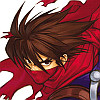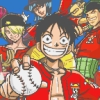SBK: Snowboard Kids (DS) review"In our modern society today, life has become too urbanised: you get up in the morning in the inner city or suburb, ready yourself with a breakfast and a shower, and then commute for upwards of an hour or higher so you can continue your struggle in the rat race that is life. Sometimes you just need to kick back and find something to distract you, whether it be an internal process such as meditation or external entertainment like watching sports on TV. " |
In our modern society today, life has become too urbanised: you get up in the morning in the inner city or suburb, ready yourself with a breakfast and a shower, and then commute for upwards of an hour or higher so you can continue your struggle in the rat race that is life. Sometimes you just need to kick back and find something to distract you, whether it be an internal process such as meditation or external entertainment like watching sports on TV.
Snowboarding, that classic adrenaline-pumping cross of skiing, skateboarding and surfing, is certainly an extreme way to cope. Little wonder, then, that the Snowboard Kids have returned to hit the slopes for the third time, this time around on the Nintendo DS, following two classic vacations in Snowboard Kids 64 and Snowboard Kids 2, both for the Nintendo 64.
Unlike Nintendo's own realistic but obscure 1080 series, but somewhat similar in several ways to Electronic Arts' SSX titles, the Snowboard Kids games can best be described as Mario Kart on snowboards: as each of the four participants in a race go down the side of the mountain, players can pick up an item from item blocks. As can be expected, there are items that affect oneself, such as the Nitro which gives the player-character a temporary speed boost, or the Snowflake symbol, which grants temporary invisibility and invulnerability to attacks from others; and then then there are the attacking items, such as the Parachute, which slows an opponent down by a third of his former speed for a few seconds, or Fog, which will actually fog up the bottom screen, requiring the affected player to blow into the mike to blow away the fog. Fan favorites such as the Mine, which lays a proximity mine down on the ground, or Wall, which acts as an obstacle in the middle of a track, also make their return.
Each individual snowboarder also has his or her special attack, which can be used a couple of times per run, as a special meter fills up on the side of the screen. Series star Slash Kamei's Lightning Bolt shoots a ball of lightning energy at a nearby opponent, paralyzing him or her, while the Japanese kunoichi Koyuki Tanaka can send out a homing shuriken that sends its victim sprawling to the ground.
However, SBK: Snowboard Kids cannot carry its weight alone by imitating the party-style of the Mario Kart games: as a result, (and much like its predecessors), the title offers a series of stunts that can be performed in each level, enticing one to best their previous score. During the duration of a ride down the mountain slope, a character can crouch and then jump, doing a flip or a spin. When leaping off of a high ramp, the opportunity for additional tricks is granted: the Rapid Press requires the player to tap the touch screen multiple times, while the Touch asks the player to tap certain sections on the screen. Each time a move is successfully pulled off, the in-game avatar will grab his or her snowboard in a satisfying maneuver.
Pulling off tricks also lets the player rack up points, which are at the end of each race added into an overall pool of points built up on each game card. With the points a player accumulates, one can buy new snowboards that lean to different stats (turning, speed, ability to pull of stunts), new snowboard decals, new clothes, a few new players, and even the ability to toggle on a couple of cheats during the Exhibition Mode.
It is a shame, then, that SBK: Snowboard Kids is brought down by a few issues that could easily have been fixed with even a small amount of quality assurance. The most annoying is the aforementioned items: certain items, such as the aforementioned Parachute or Fog, or the 1000-Ton or Sleep items that also hit an opponent, attack instantly. When facing a computer A.I., invariably its item use will target you and only you, and never the other two snowboarders, and the inability to dodge an instant attack can cause a player to drop from 1st place to 4th quite easily. While Special Attacks can be dodged, actually doing it is another thing: one must jump in mid-air right before being hit by the Special Attack to be invulnerable to it, with it being difficult to track a Special Attack's path. These only serve to artificially inflate the difficulty of the game, often to the frustration of the player thanks to the perfect accuracy of the opponent. Another manner in which a player can be screwed over is when going through certain narrow tunnels in the game: if you run into a wall, you will glitch through and get stuck inside the rock surface for a few seconds before falling out.
A third area of contention I have is with the boss battle levels. These are basically one-player races down certain tracks, in which the player must pull off multiple tricks to increase his special attack meter. Doing so will allow him to shoot a snowball at the 'boss' of the level, a snowman that skis downhill while putting up ice-walls behind to stop the snowboarder dead in his or her tracks. Multiple snowballs must be generated and then thrown accurately at the snowman: even a single missed snowball usually warrants a restart of the level, with little leeway to destroy the Snowman before it reaches the bottom of a course.
And of course, there is the game's art style: the Snowboard 'Kids' are all grown up to teenagers, with the anime style a far cry from the exaggerated 'chibi' style, big noses and heads and all, of the original two Snowboard Kids games. While the look of the kids does not affect gameplay itself, as a fan of the first two games, it is fairly upsetting to me to see the former kids in their mid teens.
That said, it is the presence of two little things that make SBK: Snowboard Kids enjoyable and prevent it from falling underneath the raging waves: level design and graphics and the music. While there are a couple of bland levels such as the straightforward Japan and France, most of the others are very interesting. New York sweeps through several narrow streets dominated by static train cars, while China represents the stereotypical urban night-life district. In San Fransisco, one must constantly navigate curves while dodging street cars. Germany starts through several strips of forests, before dropping into a grand old royal castle, the path taking the player along the ramparts of the mighty stone structure and eventually out the drawbridge. Each level is accompanied by appropriate medleys: a quick and excited frenzy in China, contrasted with a slow and sombre march in rural Germany.
All said and told, it is Canada, the 'final' level, that I truly enjoy the most. Staying in a completely rural mountain free of any human habitat, the initial scenery is that of a gorgeous northern lights at night. As the player's snowboarder skids down the mountain, he or she goes through caves riddled with crystal ice and more breathtaking falling snow, all the while with peaceful, idyllic music playing. Although the game is marred with several severe flaws, it ultimately concludes quite nicely with this beautiful course.
5/10
 |  |  |  |  |
Community review by darkstarripclaw (April 17, 2010)
A bio for this contributor is currently unavailable, but check back soon to see if that changes. If you are the author of this review, you can update your bio from the Settings page. |
|
More Reviews by darkstarripclaw [+]
|
|
If you enjoyed this SBK: Snowboard Kids review, you're encouraged to discuss it with the author and with other members of the site's community. If you don't already have an HonestGamers account, you can sign up for one in a snap. Thank you for reading!
User Help | Contact | Ethics | Sponsor Guide | Links









